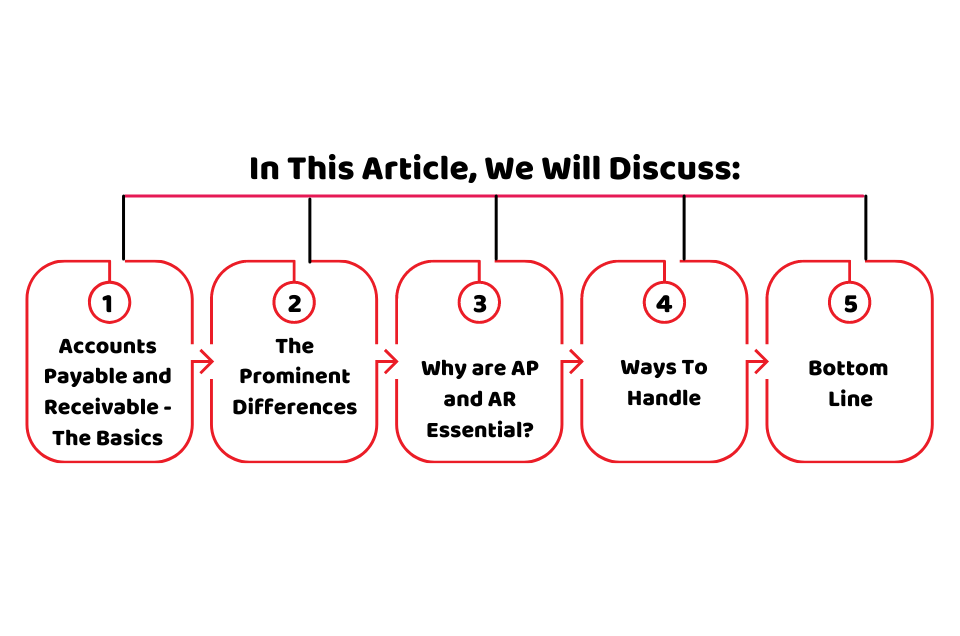If you intend to get an understanding of the accounting process as a small business owner, it is important to be clear about accounts payable and accounts receivable. In this article, you will figure out everything related to the differences between AP and AR. The detail to which includes:
- Accounts Payable and Receivable – The Basics
- The Prominent Differences
- Why are AP and AR Essential?
- Ways To Handle
Interested in ACCOTAX? Why not speak to one of our qualified accountants? Give us a call on 0203 4411 258 or request a callback.
Accounts Payable and Receivable – The Basics:
Let’s start with accounts payable which are also known as AP. In the general ledger of an organisation, AP plays the role of a record that explains how much the company owe to pay to the creditors and to the suppliers. In other words, the amount your company owe to other parties comes under this AP.
Talking about the basics of accounts receivable, we see that it belongs to the obligations of other parties and customers in form of the amount they owe to your company. A credit line that is extended refers to AR as well, from the clients to the customers.
Looking for all-inclusive monthly packages? Let us take care of your affairs so that you can focus on your business.
The Prominent Differences:
So, looking at the factors that put the prominent difference in AP and AR, we can call them two faces of the same coin. The major difference in simple words is that accounts refer to the money that your company owe to other parties, whereas, accounts receivable represents the amount that is for the customers to pay.
Moreover, current liability is taken as accounts payable and current assets of your company are taken as accounts receivable. As an owner, you must know that accounts receivable will be converted into cash within the duration of a year for your company. However, the money you owe to the creditors is the company’s liability.
Get an instant quote based on your requirements online in under 2 minutes, Sign up online or request a callback.
Why are Accounts Payable and Receivable Essential?
Once you’ve understood the fundamentals of AP and AR, it’s essential to do not to forget why accounting techniques matter. For many small businesses in the world, overdue bills are trouble. Why? Because overdue bills can disturb the whole pattern of your business activity. According to Bacs, nearly 1/2 of the UK’s small businesses are not being paid in time.
This amount mainly can be used to fund new products, put money into growth, or increase shareholder payouts. By optimising your debts receivable process, you could make sure that your company is capable of hold strong ground in the market.
Ways To Handle:
Wondering the way to cope with accounts payable and receivable? To be away from the cash flow issues that can end result from inefficient accounting techniques, it’s good to optimise each account payable and receivable.
Here are our 3 recommendations for the way to cope:
Consider automating – There are many kinds of accounting software program tools, like Xero and QuickBooks, that you could use along a cloud-primarily based like GoCardless to automate your accounts receivable process.
Streamline invoicing – From a wrong detail to invoices that honestly wander off in the shuffle, there are a huge variety of mistakes that may be brought all through the invoicing process. Be certain to apply a bill template to make sure you’re inclusive of all of the applicable information.
Negotiate favourable Terms – Don’t overlook optimising accounts payable. One of the satisfactory approaches to do to your company, which enables to open up cash and increase operating capital.
Can’t find what you are looking for? why not speak to one of our experts and see how we can help you are looking for.
Conclusion:
To sum up the discussion, we can say that the major factor due to which AP and AR are different is the obligation to owe money. AP refers to the amount that the company has to pay to creditors, however, AR refers to the money that the customers owe to your company. This is also taken as the assets of the company. We hope this article helped to develop a better understanding.
Disclaimer: This article intends to provide general information based on accounts payable and receivable.






















































